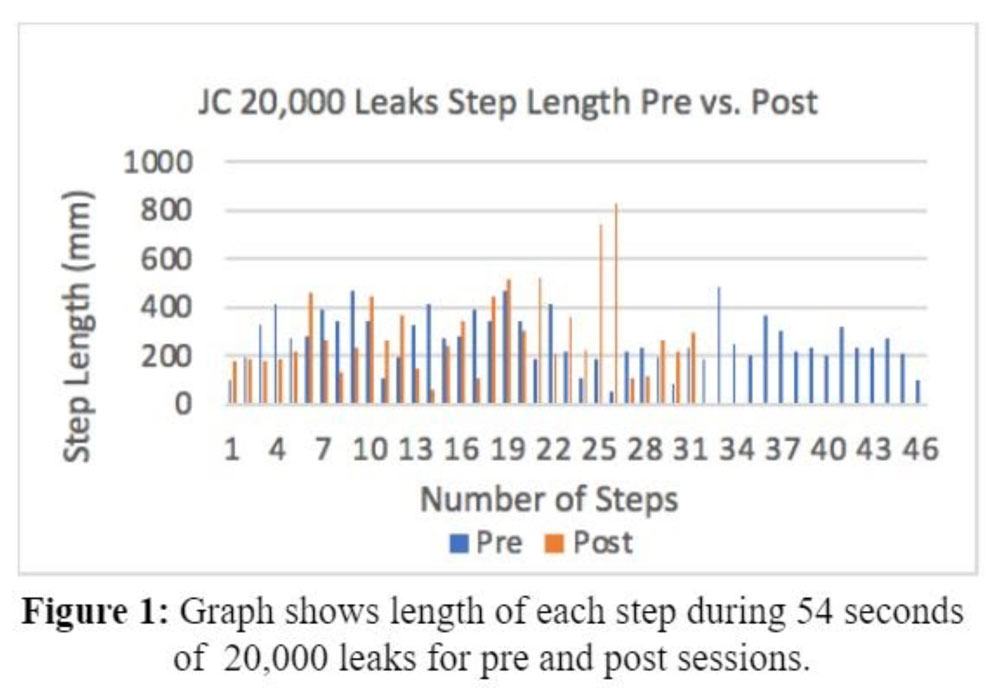By Abigail Tolstyka, Sydney Bajusz, Ann Reinthal, and Deborah Espy
Stroke is a neurological disease that causes disability in adults and increases the risk of falling. The integration of technology and rehabilitation strategies are systematically used in physical therapy to target muscle activity in post-stroke patients. This addresses initial muscle weakness of the affected side of the body, as well as asymmetrical postural behavior. The objective of targeting mobility control is to achieve body support, balance control, and gait progression.
A focus on stepping patterns in post-stroke patients is one technique in retraining balance. This includes practicing forward, lateral, and backward stepping. Stroke patients typically use a different step strategy to compensate for their affected limbs. Measuring the length of each step is necessary when analyzing a change in step reaction and adjustment over a period of time. Incorporating proper weight bearing exercises during rehabilitation is another method to restore balance. Single-leg exercises are used to train the affected side of the body and achieve symmetrical gait and weight bearing.
This research study used different kinematic measurements to discover whether playing motion-sensing video games while attached to a harness would improve balance in post-stroke recovery patients. The video games incorporated exercises such as kicking, multidirectional stepping, reaching, and weight shifting. Variables such as time spent in a one-leg stance and stride length were used to evaluate differences in coordination and balance from the beginning to the end of the study.
METHODS
Participants consisted of older adults who experienced a stroke at least 6 months prior to enrollment in the study. The study had 3 groups; control, slip, and gaming. Along with pre- and post-testing, gaming participants attended 10 weeks of gaming sessions, including 1 session to learn the game, 2 gaming therapy sessions with motion capture (weeks 2 and 10) and 7 regular gaming therapy sessions. The games played during session 2 and 10 were played on the same level in order to compare kinematic balance data via CORTEX motion capture and MATLAB software; however, during sessions 3 – 9, participants were able to progress to harder levels based on their reported rate of perceived stability (RPS). Videogames 20,000 Leaks and Target Kick [Microsoft Kinect Sports for Xbox 360] are analyzed in this discussion.
20,000 Leaks displays an aquarium box with holes to encourage participant stepping and reaching as they plug the leaks. The leaks appear on the walls and floor and participants must move in all 4 directions and hold their hand or foot over the hole until the leak is stopped. Two rounds, which last about 3 minutes, are played at each session. For this game, pre- to post-session step length was used as an indicator of balance skills.
Target Kick prompts a 1-leg stance with a simulation of kicking a soccer ball into a goal. The screen shows a soccer goal with targets guarded by a goalie. The participant must aim for these targets, however they must alternate which leg they use for each kick. The amount of time spent on 1 leg was evaluated pre to post to represent balance.
RESULTS AND DISCUSSION
 On average, the post-session results displayed longer step lengths per millimeter on the XYZ plane than the pre-session results for this participant [Figure 1]. During the pre-session, the participant took 46 total steps with an average step length of 266.5 millimeters. A total of 30 steps were taken in the post-session with an average step length of 297.4 millimeters. The participant was able to complete the game by using fewer, more deliberate steps. This, paired with the increased stride length, suggests improved confidence, balance, and coordination moving in all 4 directions.
On average, the post-session results displayed longer step lengths per millimeter on the XYZ plane than the pre-session results for this participant [Figure 1]. During the pre-session, the participant took 46 total steps with an average step length of 266.5 millimeters. A total of 30 steps were taken in the post-session with an average step length of 297.4 millimeters. The participant was able to complete the game by using fewer, more deliberate steps. This, paired with the increased stride length, suggests improved confidence, balance, and coordination moving in all 4 directions.
The same participant showed improvements in 1-leg stance on his hemipelagic right-side while playing Target Kick. During the pre-session, the average time in 1-leg stance was longer for his non-hemipelagic left-side than his hemipelagic right-side [0.660s vs 0.552s]. However, during the post-session the average time in 1-leg stance was relatively the same on both sides, with the left side remaining constant and the right-side showing improvement [0.650s vs 0.639s]. The reduced disparity in 1-leg stance time suggests a greater sense of balance, specifically in control and coordination between both sides of the body.
CONCLUSION
Overall, this participant showed notable improvement with balance related activities. The video games encouraged balance motions in a unique and engaging form, which enhanced the patient’s balance abilities, as demonstrated by more purposeful and even stepping and kicking during post-session gaming.









